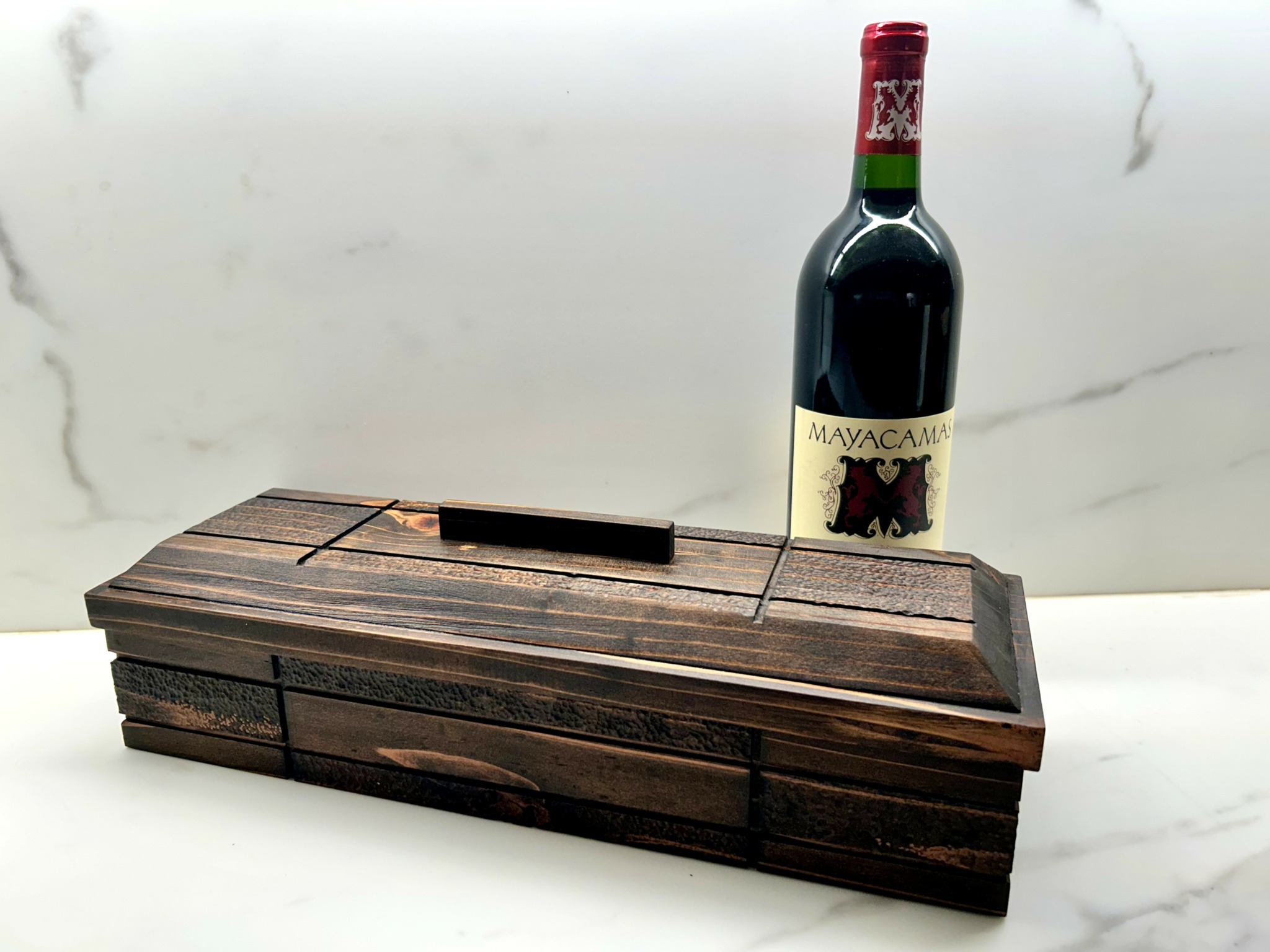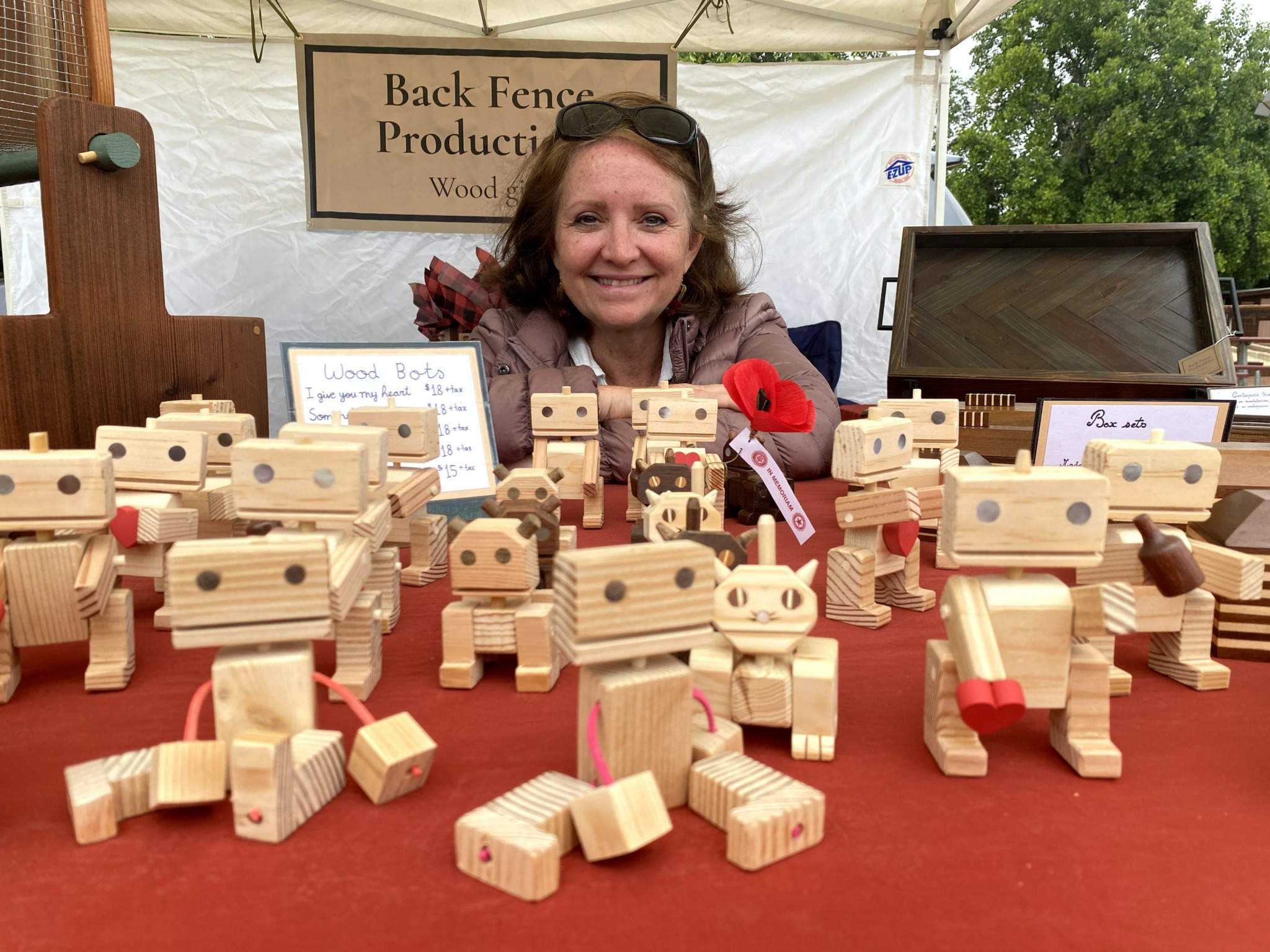We’re excited to introduce you to the always interesting and insightful Stéphanie Beaurain. We hope you’ll enjoy our conversation with Stéphanie below.
Stéphanie, looking forward to hearing all of your stories today. Can you talk to us about a project that’s meant a lot to you?
I once was commissioned by a gentleman I met at a Farmers Market for a custom redwood box, designed with carved details and Napa leather lining, to hold a cherished childhood counting ruler he planned to pass down to his son. To create something so personal and meaningful, knowing it would become part of a family legacy, made the project very fulfilling and touching. It is humbling to me to think that a piece I make will become an intimate part of someone’s life.

Stéphanie, love having you share your insights with us. Before we ask you more questions, maybe you can take a moment to introduce yourself to our readers who might have missed our earlier conversations?
In 2023, on a dare to myself, I launched BFP as an experiment—to share my passion for woodworking and see how people would respond to my creations. What began as a personal challenge quickly turned into a meaningful venture grounded in craftsmanship, sustainability, and creativity.
I design and build handcrafted household pieces that are both functional and decorative, using mostly upcycled or remnant wood sourced from local construction, flooring, cabinetry, and even guitar-making businesses. My offerings range from playful, whimsical items—like wooden bots and tiny treasure boxes—to intricate parquetry trays and heirloom-quality platters. Each piece is made one at a time, with unique variations in design, wood grain, and finish. No two are ever alike.
For me, it all starts with the wood. I look at a piece, start a quiet conversation with it, and imagine what it wants to become—and which other woods it might “befriend” in the process. That intuitive, organic approach drives my work.
In addition to ready-made pieces, I also accept commissions, designing custom work to fit a client’s specific vision and space. Whether it’s a keepsake box or a larger home accent, the result is always something personal and one-of-a-kind.
In an age of mass production and synthetic materials—even in luxury goods—it’s increasingly rare to find objects that carry emotional weight. I want my work to offer just that: something warm, real, and resonant.
My core values guide everything I make:
Upcycling and sustainability: I prioritize repurposing leftover or discarded wood from other trades.
Responsible sourcing: When new materials are necessary—such as mother-of-pearl inlays or specialty woods—I seek out ethical, sustainable suppliers. For instance, I’ve chosen luthier-grade alternatives to endangered woods like ebony.
Uncompromising quality: Every piece is crafted with care and a commitment to the highest level of workmanship I can offer.
My dream is for BFP to grow not just as a business, but as a path for lifelong learning—financing future training so I can continue to evolve as an artisan.

We’d love to hear a story of resilience from your journey.
I don’t have a single defining story of resilience, but rather a series of ongoing challenges that come with building a creative business. Like any small business owner, I’ve faced the usual hurdles—securing funding, finding the right space, juggling logistics. Those are tough enough. But being a maker adds an extra layer.
Most creatives wear every hat: we’re the designer, the builder, the marketer, the accountant. That constant switching of roles can be both exhausting and isolating. On top of that, there’s a deeply personal element to our work. When business slows down, it’s not just about cash flow—it can feel like a reflection on your talent or whether what you create matters to anyone. That self-doubt is something many artists and makers wrestle with.
Resilience, in this context, isn’t about powering through a single moment—it’s about showing up again and again, creating even when you’re unsure, and staying connected to the reason you started in the first place. As an artisan friend of mine often says: “If you don’t appear, you disappear!”.

In your view, what can society to do to best support artists, creatives and a thriving creative ecosystem?
Sadly, the days of the Medicis—who supported artists not only financially but also culturally—are long gone. And while financial support through grants, commissions, or modern-day patronage remains essential, cultivating a thriving creative ecosystem requires fundamental changes in behaviors and priorities.
That starts with resisting the temptation of cheap, mass-produced goods and the convenience of online shopping, which often devalues the time, skill, and humanity behind handmade work.
Of perhaps even greater importance is restoring art education in our schools. Early exposure to the arts helps nurture curiosity, creative thinking, and hands-on expression from a young age, and from there we can shift societal norms toward deeper appreciation and support for the arts.
Our collective as well as personal well-being would greatly improve from such a renewed perspective.
Contact Info:
- Website: https://www.backfencepro.com
- Instagram: @back_fence_productions
- Facebook: Stephanie Beaurain


Image Credits
Larry Anderson Photos


